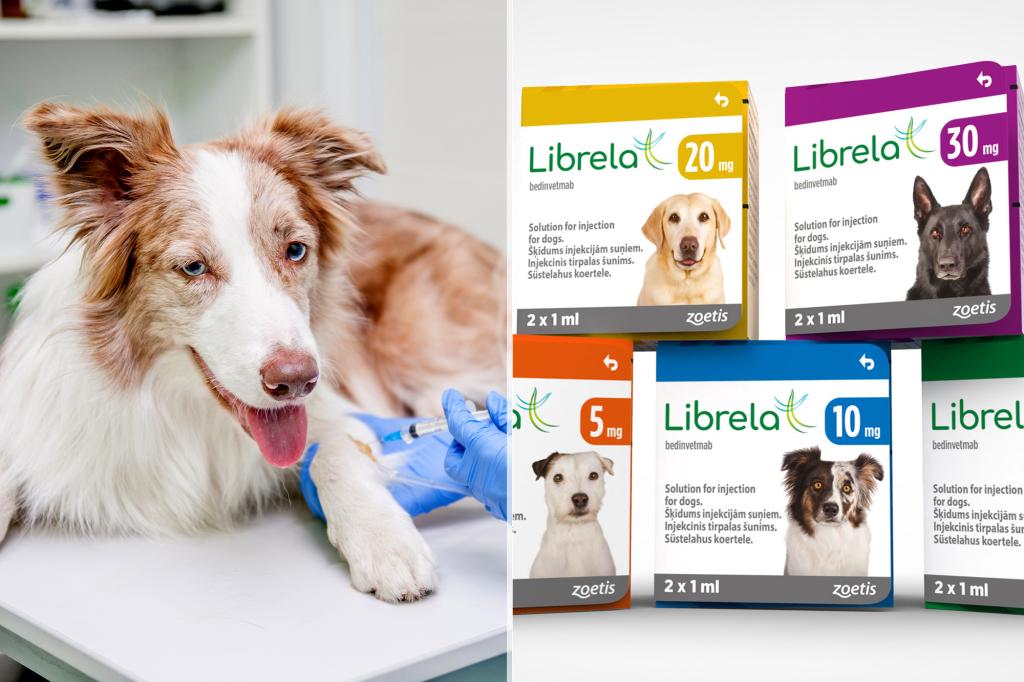The Food and Drug Administration (FDA) has issued an urgent warning regarding Librela, a popular injectable arthritis medication for dogs, citing thousands of reported cases of adverse reactions, including seizures, lameness, loss of muscle control, and even death. Between January 2023 and March 2024, the FDA received reports of over 3,600 dogs experiencing debilitating health problems potentially linked to the drug. While some dogs recovered, others faced severe consequences, requiring euthanasia in certain instances. This alarming situation has raised significant concerns about the safety and efficacy of Librela, which was approved by the FDA in 2022 and is manufactured by Zoetis, a prominent animal health company.
Librela, designed to alleviate the pain associated with osteoarthritis in dogs, has been widely prescribed since its approval. Osteoarthritis is a common degenerative joint disease affecting many canines, particularly older individuals and certain breeds. The demand for effective pain management options for dogs suffering from this debilitating condition has made Librela a sought-after treatment. However, the recent reports of serious adverse effects have cast a shadow over the drug’s perceived benefits, prompting the FDA’s warning and raising questions about the adequacy of pre-approval testing and post-market surveillance.
The severity of the reported adverse events varies, ranging from mild discomfort to severe neurological and systemic issues. Seizures, a particularly concerning side effect, can be life-threatening and require immediate veterinary intervention. Lameness and loss of muscle control significantly impact a dog’s mobility and quality of life, potentially leading to long-term disability. The fact that some cases resulted in death, including euthanasia due to the severity of the adverse reactions, underscores the gravity of the situation and the potential risks associated with Librela administration.
The FDA’s warning has brought to light concerns raised by dog owners who believe Librela has harmed their pets. In April 2024, several owners shared their experiences with the Wall Street Journal, detailing the devastating impact of the drug on their dogs. One heartbreaking account involved a 12-year-old rescue dog named Daisy, who developed a limp and wobble shortly after her first Librela injection. Her condition deteriorated rapidly after a second dose, leading to lethargy, loss of appetite, inability to walk, and ultimately kidney failure, which necessitated euthanasia. These personal stories add a poignant dimension to the statistical data, illustrating the real-world consequences of the drug’s adverse effects on beloved companion animals.
Zoetis, the manufacturer of Librela, maintains that the drug is safe and effective, emphasizing the relatively small number of adverse events compared to the millions of doses administered globally. The company asserts that the reported side effects are rare, falling within acceptable limits as defined by regulatory agencies like the European Medicines Agency. They cite the drug’s extensive use in Europe for over three years with a positive safety profile. This stance contrasts with the concerns raised by the FDA and the experiences shared by affected dog owners, creating a complex situation requiring further investigation and transparency.
The FDA’s warning serves as a crucial call for increased vigilance and careful consideration when prescribing and administering Librela. Veterinarians are advised to thoroughly discuss the potential risks and benefits with dog owners, considering alternative pain management options where appropriate. Close monitoring of treated dogs is essential for detecting and addressing any adverse reactions promptly. The ongoing investigation into Librela’s safety profile will hopefully provide more clarity and guide future recommendations for its use. In the meantime, open communication between pet owners, veterinarians, regulatory agencies, and the manufacturer is vital for ensuring the well-being of canine patients and minimizing the risks associated with this medication.

